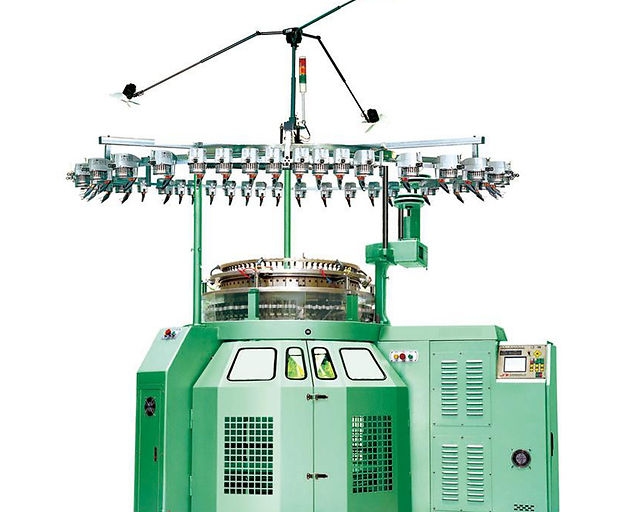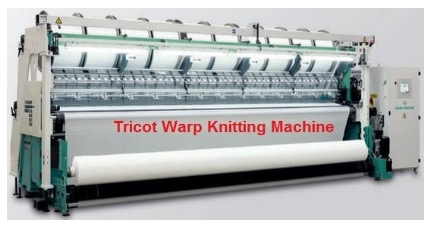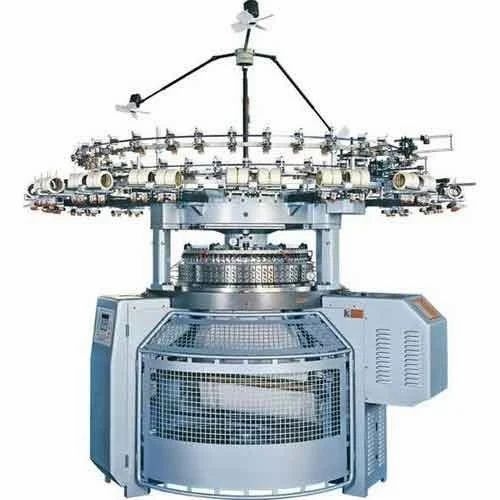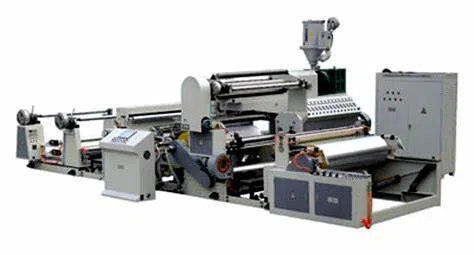KNITTING MACHINE:-
Types of Knitting Machine, Classification and their Usage:-
As the knitting is very commonly used in the textiles to produce soft cloth or fabric. People used to knit their garments with great care and labour either in hand knitting or machine. All the process of knitting has been been explain earlier in my some blogs and will come in next few. Knitting machines have altered our perceptions of clothes and fabric. Since its conception in 1579, the business of creating garments has shifted to tiny cottage enterprises, making hand knitting a leisure pass time. It gradually evolved, and today’s market is flooded with complicated machine knitting capable of producing a wide range of knitted fabrics.
Knitting is the second most used fabric production process after weaving, and knitting is creating loops and weaving strands through them to create a cloth.
KNITTING:-
Knitting was once thought to be a unique method of producing fabric from wool fibres that involves the interlacing of strands. Knitting is done by machine and can be done by hand too. Knitting is accomplished by looping yarn in a round, row or flat. Knitting is done using long sticks, known as needles. Wool knitting machines are classed according to fabric creation procedures, and machine configuration is used to categorise devices further.
CLASSIFICATION OF KNITTING MACHINE:-
There is two types of knitting machines: warp knitting and weft knitting. A succession makes warp-knitted textiles of yarn loops formed in the fabric's longitudinal direction. Weft-knitted textiles are made when one continuous yarn develops loops in opposite directions. Weft and warp knitting can be combined into the jacquard mechanism to create elaborate knitted materials.
1. Weft Knitting
2. Warp knitting machines
3. Socks knitting machines
4. Whole garment knitting machines
TYPES OF KNITTING MACHINE:-
Knitting machines can be of different types.Each type of knitting machine differs from the other based upon several factors such as, type of usage, industry requirements,difference in working mechanism etc. Some the types of knitting machines are as follows -
1) WEFT KNITTING MACHINE:-
Weft knitting occurs when the threads run through the fabric widthwise or crosswise about the direction of fabric production, and this is similar to the weft yarn knitting machine in woven textiles. The following are the many types of weft knitting machines.
CIRCULAR KNITTING MACHINE:-
This machine is round in shape. It is the most common type of knitting machine, extensively used for creating cloth for apparel and garment uses. Circular knitting machines have the following components: a latching needle, a compound needle, a sinker, a cam, a cylinder, and a dial. Circular knitting machines can be further characterised as follows.
SINGLE JERSY CIRCULAR KNITTING MACHINE:-
(Image of single jersy Four track three end fleece circular knitting machine ref by https://www.ckd-cd.com)
Designed with a central adjustment mechanism that allows textiles with various densities to be adjusted simply and conveniently; typically furnished with various gauges of cylinders that are simple to change and can satisfy the various knitting market needs.
PLAIN SINGLE JERSY MACHINE:-
The most common machine used to produce knitted fabric. It comes with a latch needle and a sinker set, and both revolve around the knitting cam mechanism, which produces a precise and down action. A set of one track of cam runs here, producing a fabric with the requisite thickness and density.
Two Track , Four Track knitting machine:-
This machine can generate a wide range of knitted fabric patterns at a fast production rate. The number of cameras may be changed here. With a fixed cam mechanism, it has a distinct action for each needle and sinker. It is used to make t-shirts, undergarments, polo shirts, and swimwear, among other things.
TERRY AND FLEECE KNITTING MACHINE:-
This machine can generate a wide range of knitted fabric patterns at a fast rate of production. The number of cameras may be changed here. With a fixed cam mechanism, it has a distinct action for each needle and sinker. It is used to make t-shirts, undergarments, polo shirts, and swimwear, among of them.
JACQUARD:-
This machine has three needle positions. It can create textured designs with flowers, brocade, damask, matelassé, paisleys, and animal motifs.
2) Warp knitting machine:-
If the yarns run in the same direction as the wrapped yarn in woven fabrics, the technique is known as warp knitting. Fabric is formed by generating loops from parallel sheets of yarn machine knitting that run in the direction of fabric production.
Raschel knitting machine:-
Although latch needles are most typically used, complex needles may also be employed. Sinkers are used to keep the cloth in place while the needle rises. There are more guide bars and warp beams operated than tricot machines. The warp beams are located at the top, and the machine speed is lower than that of tricot machines.
Tricot knitting machine:-
Sinkers regulate the whole knitting cycle with this machine, which uses bearded or complex needles like single and double jersey knitting machines. Tricot machines employ fewer warp beams than raschel machines. The warp beams are in the rear, and the gauge is commonly specified as one needle per inch.
3. Socks Knitting Machine:-
Circular knitting principles apply to knitting machines yarn. Good quality goods can be created only when the yarn-feeding and stop-motion features are correctly configured. Needles are knit in circular weft knitting, and loops are generated horizontally to form socks.
4) Whole garments knitting machine:-
Seamless knitting is a trend in which an entire garment is knitted, eliminating the necessity for sewing cloth during garment manufacture. Manufacturers of seamless knitting machines include Santoni and Shima-Seiki. These machines are commonly employed in the production of sportswear and innerwear. Seamless technology produces a highly high-quality knit fabric for the waist, neck, chest, and buttocks and does not require seam moulding.
Double jersy Circular knitting Machine:-
Double jersey circular knitting machines can be of many types which are used all across the industry.The variations of double jersey circular knitting machines which exist are as follows-
RIB KNITTING MACHINE:-
It is one of the most often used knitting machines to produce clothing fabric. This is a double bed machine with one cam track in each bed and one needle set in the other bed. Needles are placed perpendicular to the device, and the cylinder and dial needles move vertically. The fabric created is more stretchy than interlock fabric and single jersey. Rib knitting machine configurations are used in producing shirts, casual clothing, bottoms, and so on.
INTER LOCK KNITTING MACHINE:-
Interlock knitting is done on a double bed machine with two sets of tiny, long needles. Fabric produced by this machine on both the front and back has the same surface and is frequently used in innerwear, track trousers, and other applications.
PIQUE FABRIC KNITTING MACHINE:-
The fabric knitting machine has a waffle weave appearance. The cloth has a rough feel and is commonly used to make polo shirts.
Straight Bar knitting Machine:-
These machines have vertical bars with bearded needles. The exact construction of the cam system controls movement, and the divisions are evenly dispersed along the machine's length. These machines, sometimes called hand flats, are commonly utilised in producing sweaters, much like handloom weavers. There are two types of straight bar machines: single-needle and double-needle straight bar. This fabric may also be used to make rib and single jersey fabrics. The speed is slower than that of any industrial linear bar machine.
Flat Bar Knitting Machine:-
This machine is often used to create 3D structured knitted fabric. The fabric made is quite similar to that of a circular knitting machine. Needles are set on a straight bar that moves from front to back. These machines are used to make collars, armbands (cuffs), and even sweaters in some case.
Flatbed Knitting Machine or V-Bed
Conclusion:
These machines have a variety of applications in which they are employed in the industry. Furthermore, Knitting machine innovation has rapidly revolutionised the rising capabilities of knitting machines in making knitted materials. You can choose any of the above knitting machines for your textile sector.
The first knitting machine:
The Stocking Frame Machine was the first mechanical part of a knitting machine introduced by William Lee.
Knitting process:-
Knitting involves interlinking or knotting several loops formed from one continuous thread with long needles. Each loop or knot links to the one before it, and when enough loops are produced, the result is a flat piece of cloth known as a textile.
The two most common classification of knitting.
Knitting machine have beencategorised
as Weft Knitting Machines or Warp Knitting Machines.
Difference between a single jersy and double jersy knitting machine.
Single Jersey fabric weight and thickness is half of the rib fabric, mainly used to produce Polo Shirts, T-shirts, and Tank Tops. In contrast, Double Jersey fabric thickness and weight are twice rib fabric, primarily used to make heavy-wear dresses such as jackets, hoodies, high-quality T-shirts, and so on.
Ref:-khatabook.com/blog/classification of knitting machine.




















Comments
Post a Comment